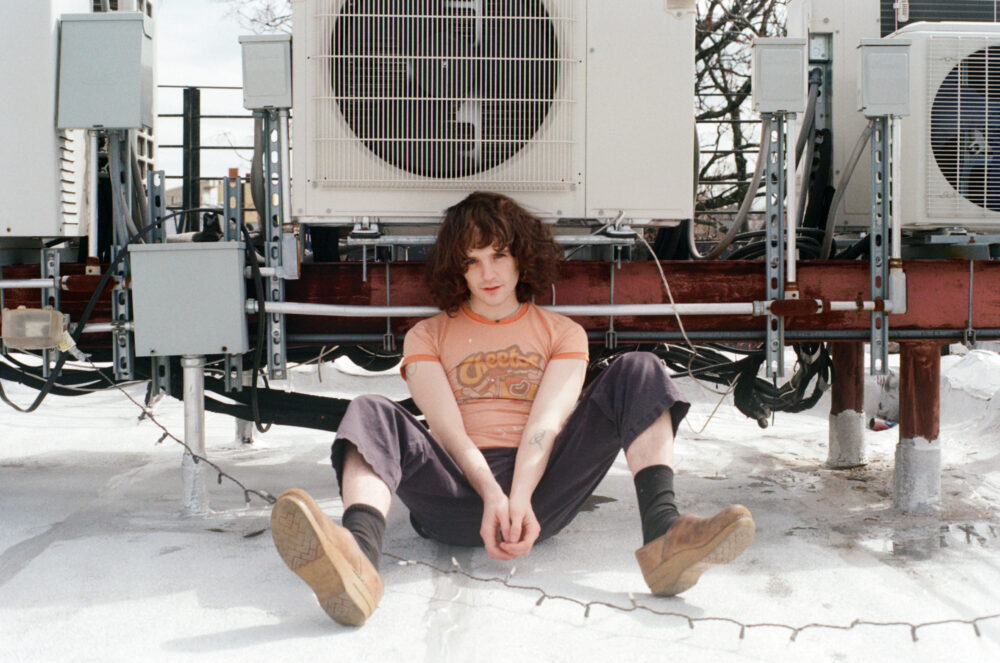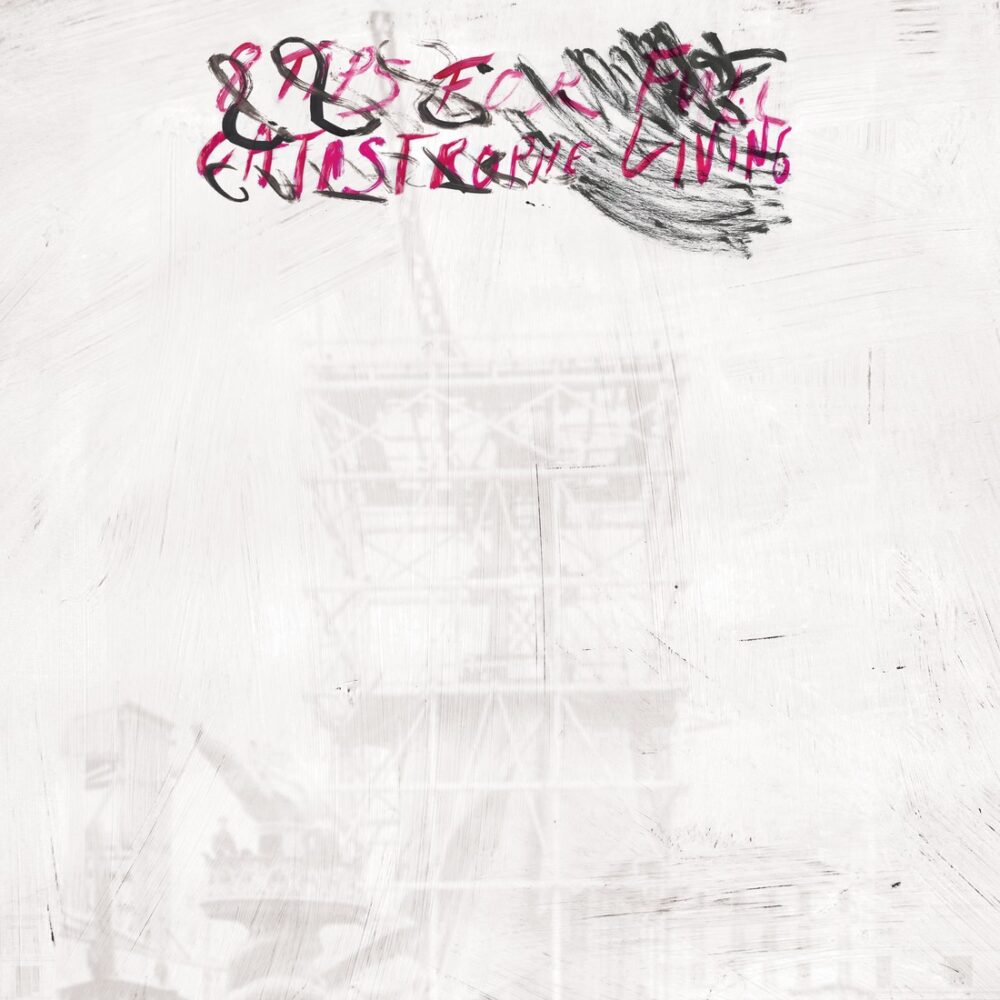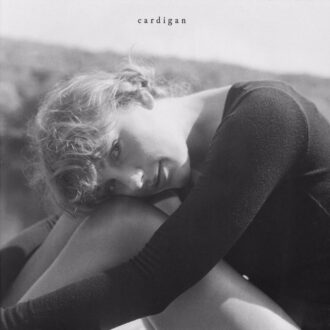Artist To Watch: Asher White

Jessica Dunn Rovinelli
Asher White thrives in contradictions. The Brooklyn-based artist’s music clearly draws on the pop canon, but her songs rarely unfurl with the expected linearity or instant accessibility associated with pop music. She has an affection for solitary home recording, clashing instrumental assemblage, and outré sonic experimentation, but she’s also able to tap into a reservoir of viscerally catchy melodies. She has over a dozen albums publicly available online, yet she feels like she’s still just scratching the surface of where her career could take her.
After years of quietly releasing new music to a small audience on Bandcamp, White began garnering positive reviews last year for her album Home Constellation Study and continued that momentum with an electrifying set at DC’s Liberation Weekend festival earlier this summer. Next month, she is set to share her latest record, 8 Tips For Full Catastrophe Living, which she has been teasing with a string of new singles. The full album indulges White’s flair for the experimental by defacing the pastoral exterior of her baroque chamber pop, filling her songs with noisy, textured collages and dense ambient turns. White describes the record’s sonics as sculptural and haptic, focusing on texture above melody.
Although she is currently meant to be doing press for her new album, when I talk with her, White can’t help but approach the record with a little knowing self-deprecation and anxiety due to its occasionally jagged edges. Early on, she hedges her bets by assuring me that it is just a drop in the bucket of the ongoing project that is Asher White. “Everyone’s like, ‘I love ‘Kratom Headache Girls Night,’ I’m so excited about that,'” she says, referencing her standalone single released earlier this year. “And then I’m like, ‘I have really bad news for you. All of the songs are over five minutes, and they all have passages of just texture and no hooks,'” she laughs.
That statement might be a bit of an exaggeration. Most songs on the album clock in under five minutes, and I would never say the record has no hooks — the lead single, “Beers With My Name On Them,” is full of them, including an extended propulsive techno freakout imitating the frenetic pace of a “whippets-and-Twin–Peaks-themed birthday party” that White attended. However, she is right that the record represents a left turn for an artist who is just beginning to amass some critical attention for her playful indie pop concoctions, even as it makes for some of her most captivating work to date.
Today, White is sharing the album’s longest and heaviest single, “Cobalt Room: Good Work / Silver Saab.” The track encapsulates her expansive sonic approach, freewheeling through a series of compositional rabbitholes. It is a winding narrative piece that begins on blaring doom metal guitars — coupled with what sounds like an organ and plinking toy piano — before drifting between Brazilian Tropicália balladry, tuneful noise pop, and a mangled climactic soundscape. Structurally, the results are amorphous and ever-shifting, drawing more on the musique concrète sound collage approach rather than indie acts like Dirty Projectors and Animal Collective.
White is calling while on tour in New England, chatting on the phone from a park in Portland, Maine. Wind blows her hair all over while she wanders through the trees, noting how her surroundings mirror the desiccated sonics of the upcoming album. Portland, like much of the country, is in the middle of a housing affordability crisis. “No disrespect to the town of Portland, Maine…but something went wrong here,” she says. “You’re seeing new developments populated by people who are being so abused…Like you’re seeing the building, and then you’re seeing the money that was used to make that building. And you’re seeing the absence of it in the lives of the people surrounding it. Like, it’s so one-to-one.”
The record’s second single, “Why I Bought The House,” is a meditation on a similar subject, offering a character study of a gentrifying girlboss set against one of the album’s more traditional song structures. Although feedback clouds the mix like interference from an old radio, at the core of the track is a familiar penchant for pastoral piano pop poeticism. White delivers her vocals in a cracked, unvarnished croon as her lyrics peel back the layers of her character subject, eventually finding the self-pitying and insecure person beneath: “And you must think I am going back/ I will become you/ I will become you right before the storm comes streaking out the streets.”
8 Tips For Full Catastrophe Living finds White without the collaborative chemistry that comes from a live band, but she manages to conjure a singular creative alchemy all on her own. Take a look at the credits on the record and you’ll find her credited for acoustic guitar, drums, vocals, as well as a host of other niche instruments including “broken electronics, fucked up unknown guitar pedals, Jose Cuervo Especial Silver tequila (375mL), Modelo beer (12pk), toy piano (unbranded), and YouTube videos.” What you won’t find is other credited performers. It’s all her.
The album’s inception was similarly solitary. White wrote and recorded it while living in Providence, shortly before moving to Brooklyn last year. She bookends the record with a pair of domestic mood portraits, “The Sink Thank You” and “Falls,” creating a loose narrative to the album. The record begins with the excitement and apprehension that accompany a night out and ends on a rare moment of settled intimacy as White sings, “Happy as I’ve ever been/ Tarry yet a little while.” She describes it in cinematic terms in our conversation. “The Sink Thank You” acts as the establishing shot, and “Falls” the closing shot, a flash back to tenuous reality and serenity following the tumult of the record.
That sense of motion is one of the album’s few constants. White describes the album both as a drinking record and as a reflective piece meant to be experienced on walks, where you can mirror its rising and falling momentum with constant motion. White says, “I think this is a [record for] walking around your city observing the variations in the scenery. This is a walker’s record, and it’s for drunk walks, maybe. Walking is, I would say, like a major pillar of my experience listening to music and making it, and I am able to be most receptive to music while walking. That’s like, so crucial, and I think I synthesize a lot of music while walking…You got to walk around your hometown.”
White populates the album with intriguing vignettes, exploring complicated, bitter, or difficult women as they navigate their changing worlds. On many occasions, it echoes White’s own work as a poet and sculptor, providing a hefty dose of literate abstraction while refusing to neatly conform to pop songwriting conventions. The songs are melded together like scrap metal collages, taking niche stylistic or thematic inspirations and reimagining them to White’s liking. “Travel Safe” overlays scenes from White’s Jewish family’s immigration from Ukraine to the US with imagery drawn from the ongoing genocide in Gaza. Meanwhile, the rattling lo-fi of “Country Girls” jumps between narrative perspectives inspired by two of White’s literary touchstones, Eve Babitz’s Slow Days, Fast Company and Clarice Lispector’s Hour Of The Star.
Even equipped with a lyric sheet, these specific inspirations will likely be hard for most listeners to trace without White’s own words as a guide. However, White says she is content to be misunderstood, much like her own inspirations. “I think one of the greatest songwriters ever is Julia Holter, who I think is maybe overlooked,” White says. “She’s pretty unconcerned with being understood. She’s down to be confounding in a way that I think is— I don’t know how she’s just fearless like that…And it never feels insincere or opaque, like it’s really emotive and it’s really personal and…you trust that every character that she’s bringing is a very sumptuous avatar for herself.”
White’s creative process is an intuitive, almost compulsive one, resulting in a prolific run of releases that go back into her teenage years. Counting Full Catastrophe Living, she has 16 albums to her name at only 25. That number only goes higher when you count the handful of teenage Bandcamp releases she has since switched to private. Plenty of her work from that era is still up, though. At the age of 14, White was the kind of kid who was devouring Swans’ My Father Will Guide Me Up a Rope to the Sky, going to noise rock shows in Chicago, and turning field recordings from a family vacation in Iceland into ambient drone pieces. Digging into her back catalog, you’ll find experiments with found sound, lo-fi vaudevillian instrumental diversions, and an ear for melody recalling tunesmiths like Burt Bacharach or Paul McCartney.
Seeing White live captures all of the contradictory tensions at play in her music: the tuneful melodies, the love of textural experimentation, the penchant for roiling chaotic noise. I first met White following her performance at DC’s Liberation Weekend festival. By that point, my exposure to her music had been limited to a few listens through Home Constellation Study in preparation for the festival. I wasn’t expecting a show that jumped between delicate solo electronic noodling, sludgy atonal blasts of distortion, and nervy indie punk dance fare, sometimes within a few minutes. While talking about the festival and her performance, she is quick to credit that restless and explosive approach to her pre-teen years spent going to shows in Chicago.
“I came up with Chicago noise stuff,” she says. “And the way that the Chicago noise scene operated at the time was that it was kind of thought of as a punk that was so punk that there was just no rhythm. It was like so maxed out on being fucked up. So it was all energy and aggression and intensity, and to me, that’s like the gold standard. That’s kind of inked into my brain as what is a powerful and overwhelming live performance.”
8 Tips For Full Catastrophe Living was born from a similar attempt to push all of White’s elements to their limits. It often plays like a post-apocalyptic remnant of the old world, piling loads of instrumentation on top of each other in blown-out scrawls and frayed, time-worn balladry, knitting it all together with layers of feedback and fractured melodic phrases. “Basically, every checkpoint of making this record was like, ‘How can I make this sound like sincerely damaged and sincerely washed ashore or eroded or corroded by the wind,'” she says. “It should feel trash-compacted or incomplete, or have large shortages or ruptures in it…Like you’re just finding plastic dinosaur toys and cigarette butts and maybe a copy of Ulysses. Just random shit — or, like, a Janet Jackson cassette. Just the stuff that we loved and is familiar being made into enormous sedimentary rock.”
If you think White is being a little precious or pretentious about her work, she’d probably laugh and agree. Just like her music, she herself seems to relish being somewhat contradictory and mercurial. In conversation, she is very self-aware, but also very funny, at one point turning the interview around on me to ask about my own musical background growing up. “I’m trying to throw you off and catch you off guard, you know. I’m trying to top. I’m trying to wrestle the journalist,” she says jokingly. Similarly, although she worries that the album may be too withholding or inaccessible, she also seems excited about the transgressive act of making something off-putting. In our conversation, she predicts it will appeal to fans of Still House Plants’ If I don’t make it, I love you and Xiu Xiu, saying it is “for people who like to pull up to the gig.”
“In some ways, this is kind of a reactive thing, because I realized that I had strayed very far from a color palette that I was really comfortable with and that I really liked, but had kind of like taught myself to run from,” she says. “I have to prove to people, maybe compulsively, that I can sing little ditties and can have, like, flowery arrangements — and I also am interested in that kind of thing — but I think I was feeling…I think I was feeling restless and angsty, and have known that I have it in me and have the interest in making that kind of music. And I always listen to it. Like, I tend to listen to more extreme music than I have always made. And so, I was embarrassed, I suppose, that there was such a huge discrepancy between what I was putting in and what was coming out,” she explains.
You should listen to 8 Tips For Full Catastrophe Living. It is a fascinating, enveloping work that will take you down twisting paths that no other record this year will tread. However, while the rest of us are still catching up, White is already following her creative muse to new horizons. Near the end of our interview, she gushes with excitement about what’s coming next. She tells me her latest music is adorned with tons of colorful strings and horns. “It’s fun and sexy and angry and every song has a perfect melody,” she says. “They’re all three minutes or less.”
Although she currently seems to be prepping a collection of winsome three-minute indie pop gems, my guess is, by the time that releases, she’ll already be excitedly pursuing something else. “I think it’s very important if there’s any press about me ever that comes out, that it should never focus on the record at hand, because it’s not that important to me,” she says with an impish grin. “If Stereogum says that I’m a Band To Watch, it should be because you have to keep watching out of the corner of your eye and never, never, never face fully towards it, like the sun.”

8 Tips For Full Catastrophe Living is out 9/12 via Joyful Noise. Pre-order it here.






